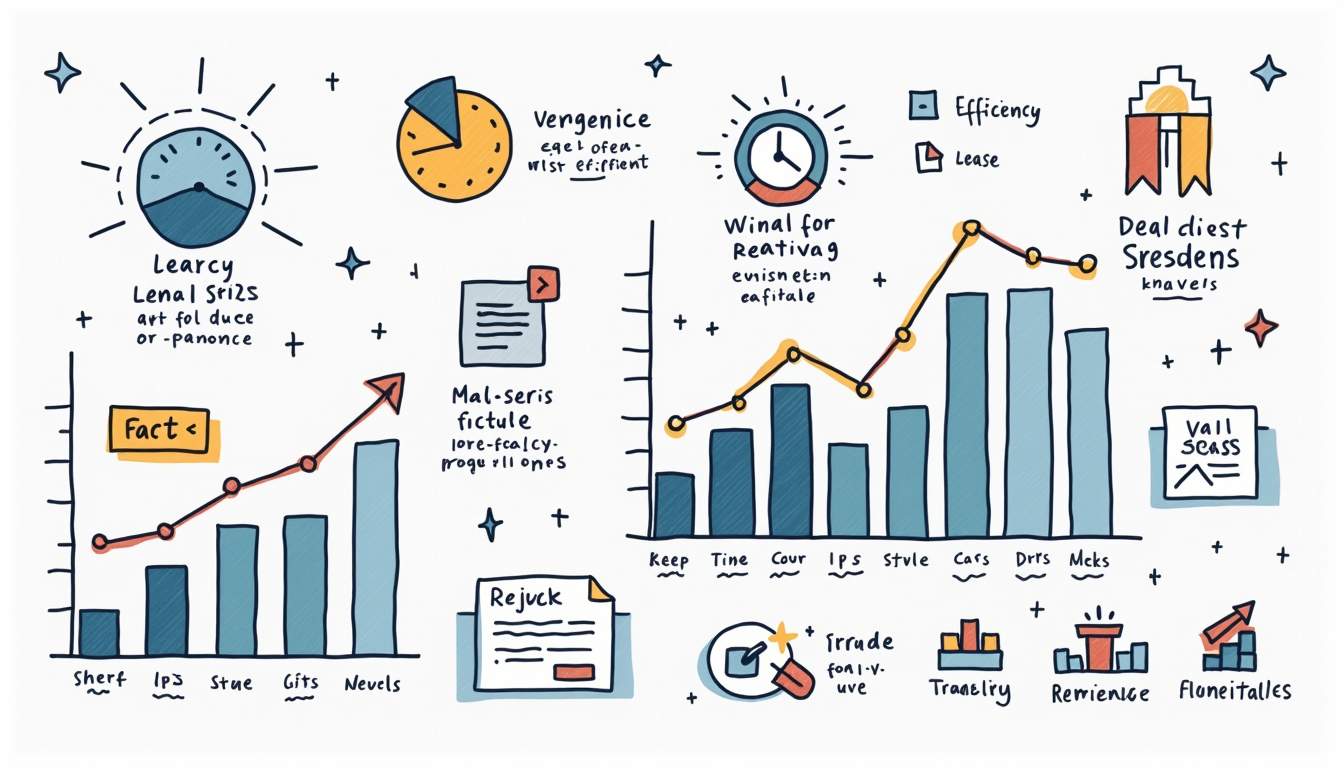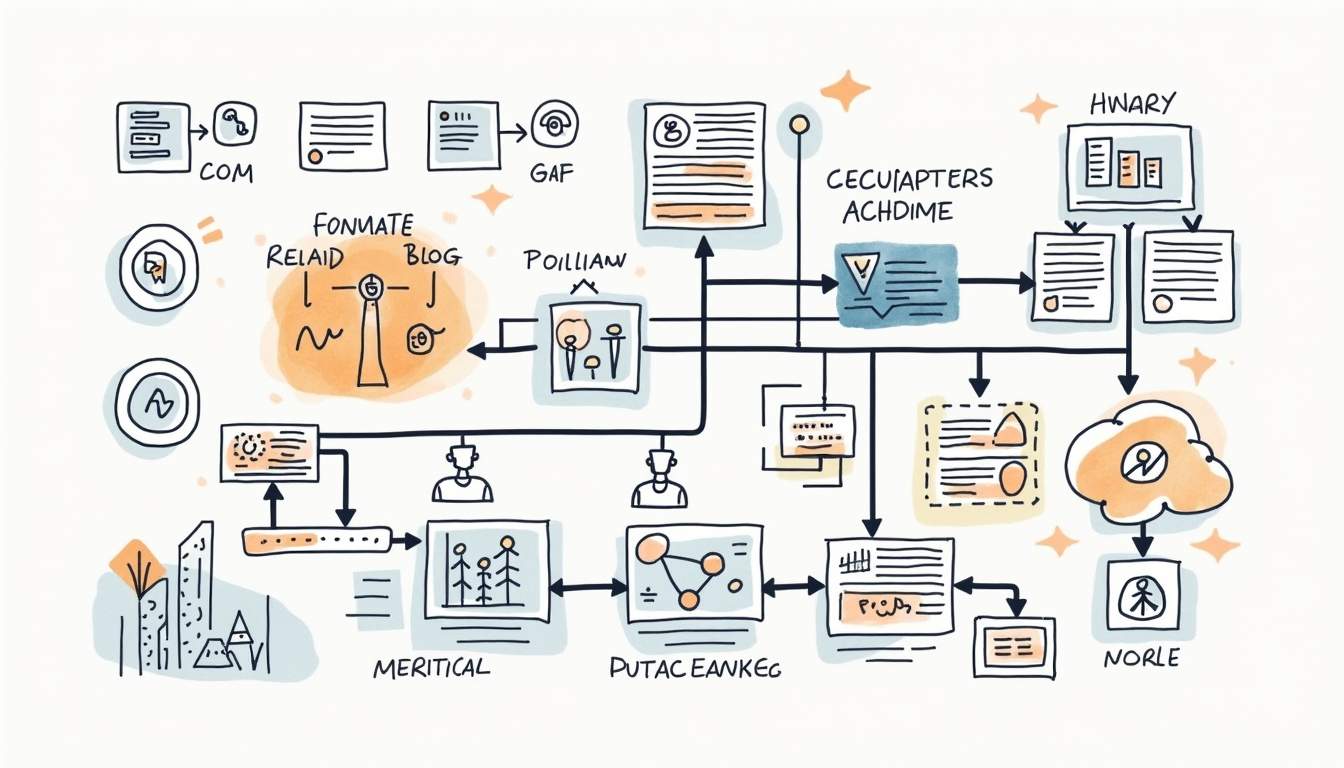In today’s fast-paced business environment, achieving optimal operational efficiency is a critical goal for organizations aiming to maintain competitiveness. This involves analyzing product performance comprehensively to identify areas of improvement that can drive productivity and growth. By understanding key performance metrics and leveraging the right tools and techniques, businesses can streamline operations and enhance their overall efficiency.
This article delves into crucial aspects of analyzing product performance, exploring metrics, tools, and strategies that facilitate effective performance analysis and operational excellence. Read on to equip your organization with the knowledge needed to optimize efficiency and drive success.
Understanding Product Performance Metrics
For any organization aiming to optimize its operations, understanding the metrics that influence product performance is essential. Performance metrics provide valuable insights into various aspects of a product’s success, shedding light on which areas require attention and improvement. By leveraging these metrics, businesses can not only enhance their current offerings but also innovate and adapt to changing market demands.

Key Performance Indicators (KPIs) to Track
Key Performance Indicators (KPIs) are critical in determining how well a product is performing in the market. Common KPIs include sales revenue, market share, customer satisfaction, and return rates. Tracking these indicators allows businesses to evaluate their product’s market presence and customer reception effectively. Moreover, setting specific targets for these KPIs can drive teams to achieve higher performance levels, fostering a culture of accountability and continuous improvement.
Furthermore, KPIs help identify patterns and trends, allowing organizations to predict future performance and make informed decisions. For instance, a sudden drop in customer satisfaction scores might signal underlying issues that need immediate attention, while an increase in market share could indicate successful marketing strategies. Consistently monitoring these indicators provides a quantitative basis for performance evaluation and strategic planning, ensuring that organizations remain agile and responsive to market dynamics.
Quantitative vs. Qualitative Metrics
While quantitative metrics provide numerical data that is easy to analyze, qualitative metrics offer insights into the nuances of customer experience and satisfaction. Quantitative data such as sales figures, production costs, and defect rates are straightforward to measure and track over time. These metrics can often be visualized in graphs and dashboards, making them accessible for quick assessments and performance reviews.
In contrast, qualitative metrics involve gathering customer feedback, conducting surveys, and analyzing social media sentiments. This type of data can reveal why customers feel a certain way about a product, uncovering motivations and pain points that numbers alone cannot convey. Together, these metrics offer a holistic view of product performance, enabling more comprehensive analysis and decision-making. By integrating both quantitative and qualitative approaches, organizations can develop a richer understanding of their products and create strategies that resonate deeply with their target audience.
Tools and Techniques for Performance Analysis
Identifying the right tools and techniques is crucial for effectively analyzing product performance. The proper use of these resources can significantly enhance an organization’s ability to gather and interpret performance data, leading to more informed strategic decisions. With the ever-evolving landscape of technology and consumer preferences, staying ahead of the curve requires a commitment to continuous improvement and adaptation.
Data Analytics Software Options
Data analytics software tools are essential for processing and interpreting large volumes of data efficiently. These tools can handle complex datasets, identify patterns, and highlight trends that might not be evident through manual analysis. In addition to traditional analytics, many modern platforms incorporate machine learning algorithms that can predict future trends based on historical data, providing organizations with a competitive edge.
Platforms like Tableau, Power BI, and Google Analytics offer robust functionalities that support real-time data visualization and reporting, essential for making timely and informed decisions regarding product performance. Furthermore, these tools often come with customizable dashboards that allow users to tailor their data views according to specific metrics and KPIs, enhancing the overall analytical experience.
Implementing A/B Testing
A/B testing is a method used for comparing two versions of a product to determine which one performs better. By altering a single variable while keeping others constant, organizations can gain insights into consumer preferences and optimize their product offerings. This method not only helps in refining product features but also aids in understanding the psychological triggers that influence customer behavior.
This technique is particularly useful for assessing the impact of changes to a product’s design, functionality, or pricing strategies, ultimately leading to improved product performance and customer satisfaction. Moreover, A/B testing can be applied to various aspects of marketing campaigns, such as email subject lines or ad placements, ensuring that every element is fine-tuned for maximum effectiveness.
Utilizing Customer Feedback
Customer feedback is an invaluable resource for understanding product performance from the user’s perspective. Gathering insights from customer reviews, surveys, and direct interactions can reveal essential information about product strengths and areas requiring enhancement. By categorizing feedback into actionable insights, organizations can prioritize improvements that resonate most with their audience.
Proactively seeking customer feedback helps organizations make customer-centered improvements, fostering loyalty and driving positive product evolution. Leveraging feedback effectively can differentiate a product in a competitive market. Additionally, implementing feedback loops—where customers are informed about how their input has influenced product changes—can further enhance customer engagement and trust, creating a community around the brand that values collaboration and transparency.
Identifying Bottlenecks in Operations
Operational bottlenecks can hinder product performance, leading to inefficiencies and reduced productivity. Identifying and addressing these bottlenecks is imperative to sustaining efficient and effective operations. The impact of these bottlenecks can ripple throughout the entire organization, affecting not only the immediate workflow but also customer satisfaction and overall profitability. Therefore, a thorough understanding of where these bottlenecks occur is essential for any business aiming to thrive in a competitive landscape.

Common Operational Challenges
Operations can face numerous challenges, including supply chain disruptions, production delays, and resource limitations. These challenges can lead to bottlenecks that create blockages in the workflow, impeding product output and quality. For instance, a sudden shortage of raw materials can halt production lines, while equipment failures can cause significant downtime. Additionally, workforce issues, such as high turnover rates or inadequate training, can exacerbate these challenges, leading to further inefficiencies.
Recognizing these challenges allows organizations to implement preventive measures, ensuring that operations run smoothly and product performance remains consistent. By fostering a culture of continuous improvement and encouraging open communication among teams, businesses can better anticipate potential issues before they escalate into serious bottlenecks. Addressing these hurdles proactively is key to maintaining operational efficiency and can also lead to innovative solutions that enhance the overall production process.
Techniques for Bottleneck Analysis
Analyzing bottlenecks involves mapping out the entire production process and identifying stages where delays or inefficiencies occur. Techniques such as process mapping, cause-and-effect analysis, and value stream mapping can be employed to pinpoint bottleneck sources. Each of these methods offers unique insights; for example, process mapping visually represents the workflow, making it easier to spot redundancies, while cause-and-effect analysis helps in understanding the root causes of delays.
Once identified, solutions such as resource reallocation, process re-engineering, or technological upgrades can be applied to alleviate these bottlenecks and optimize overall operational flow, enhancing product performance. Additionally, implementing real-time monitoring systems can provide valuable data on production metrics, allowing for quicker responses to emerging bottlenecks. This proactive approach not only improves efficiency but also empowers teams to make informed decisions that drive continuous operational excellence.
Strategies for Enhancing Operational Efficiency
Improving operational efficiency requires strategic efforts to enhance processes and systems. Implementing the right strategies can lead to significant improvements in product performance, reducing costs and increasing output.

Streamlining Production Processes
Streamlining production processes involves simplifying and improving each stage to increase workflow efficiency. Techniques such as lean manufacturing and just-in-time production contribute to minimizing waste and maximizing productivity.
By refining processes, organizations can produce higher-quality products more quickly and cost-effectively, leading to improved market competitiveness and customer satisfaction.
Leveraging Automation and Technology
Automation and advanced technology integration are powerful means of enhancing operational efficiency. Automating repetitive tasks reduces human error and increases output speed, allowing staff to focus on more strategic functions.
Investing in technologies such as artificial intelligence, machine learning, and robotics can significantly enhance the production process, making it more efficient, agile, and adaptive to changing market demands.
Continuous Improvement Practices
Embedding a culture of continuous improvement within the organization ensures long-term operational efficiency. Regularly reviewing processes and seeking opportunities for enhancement fosters a proactive approach to performance optimization.
By adopting methodologies such as Kaizen or Six Sigma, organizations can encourage innovation and maintain a high standard of operational excellence that adapts to evolving business landscapes.
Measuring the Impact of Changes
After implementing changes to improve efficiency, it is crucial to measure their impact to ensure they deliver the desired results. Measuring impact involves setting clear benchmarks and consistently monitoring progress against these goals.
Setting Benchmarks and Goals
Establishing benchmarks and performance goals provides a clear standard against which progress can be measured. These benchmarks should be S.M.A.R.T.—Specific, Measurable, Achievable, Relevant, and Time-bound—to guide effective performance tracking.
Well-defined goals help align organizational efforts and resources towards achieving improved efficiency, ensuring that all team members are working towards common objectives.
Monitoring and Reporting Progress
Continuous monitoring and reporting are vital to assess the effectiveness of implemented changes. Regularly reviewing performance reports and metrics helps organizations identify trends and areas requiring further attention.
Maintaining transparency through reporting fosters accountability and keeps stakeholders informed, enabling data-driven decisions that support sustained operational efficiency enhancements.
Optimize Your Hotel’s Performance with Prosper Hotels
Understanding and enhancing operational efficiency is just the beginning. At Prosper Hotels, we take your hotel’s performance to the next level. Our expert revenue management strategies, innovative digital marketing, and streamlined group housing services are designed to maximize your hotel’s potential. Let our team of professionals help you achieve significant revenue growth and foster a thriving environment for your team. Ready to elevate your hotel’s success? Learn More about how Prosper Hotels can drive your business forward.


 Drive More Hotel Revenue
Through Untapped Strategies
Drive More Hotel Revenue
Through Untapped Strategies
